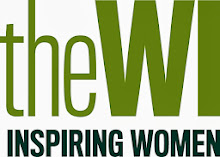Wednesday 9 November and I find myself in Freiburg from where a short minibus drive brings five of our group to Freiamt. This is a picturesque rural area north of Freiburg and is one of five renewable energy districts in Germany. Our guide is a passionate man whose knowledge of renewable energy, in particular of wind turbines, is second to none. On our way to view the turbines within the Black Forest we visit farmers to learn about their decisions to diversify into renewable energy.
The first farmer was forced to take steps to continue to make a living some 13 years ago when Creutzfeldt-Jacob disease decimated his herd of beef cattle and pigs. From that time the maize and grass he grew to feed the animals was then used to feed the tanks and machinery which produces biogas. Into the mix goes liquid dung, brought to the site from four nearby working farms. We were told of temperatures and quantities in metres and cubic metres and all about anaerobic fermentation. The residue is put back onto the land which we learned helps to produce sweeter grass and better milk yield. Interestingly, the grass is cut five times a year in this part of the world – fresh short grass is required for biomass; back home the cutting happens twice yearly – in the interests of native flora and fauna.
All the electricity produced goes to the grid with a payback of 17 eurocents per kilowatt. Of the heat that is produced some is piped down the hill to a school – which relies on the farm for its only heat source in all weathers. The farmer and his son make a good living and don’t seem to miss the early starts to muck out or feed the animals!
The journey continues further up the hill to a dairy farm with a herd of 50 dairy cattle. As in many cases in the UK, the price per litre is not adequate to provide a living. The shortfall is made up on several ways. In the cooling of the milk from 38 degrees to 3.4 degrees the heat is used to provide litre after litre of warm water; a heat source pump. What a good and sensible idea! A proportion of this farmland is rented and used as a base to site wind turbines. Their forestry land provides timber (sold) but the crown and branches are turned into wood chips for fuel. 100 cubic metres of wood chippings burns as the equivalent of 800 litres of oil which would cost around €6,000 a year. A cubic metre of wood chips is €20. This all equates to a saving of 1,500 litres of oil a year – that is, if they used oil. This farm also makes use of its own spring water. Both farms have solar panels and photovoltaic cells in abundance on their roofs.
We move higher into the hills to 7,000 feet, to the foot of a wind turbine. A very slight swoosh can barely be heard as the blades go round. This is an 85 metre high edifice and we stand at its base which has a diameter of 70 metres. This particular one is designed to last for between 20 and 25 years. We are invited into the heart of the beast to view the gauges and information boxes. It feels like going up into a lighthouse but as we go nowhere near the top we can't see out. This turbine is owned collectively by 142 local individuals.
A short walk now takes us to a brand new turbine. Installed just 2 weeks ago and made from 1,500 tons of concrete, standing 158 metres high with each wing weighing 10 tons. This ‘beauty’ is huge, has 193 owners from the community and stands in a clearing of the Black Forest.
Looking across the vast and beautiful landscape, two more turbines stand tall above trees decked in their beautiful autumn colours. Do they detract from the scene? Do they interfere with the view? Possibly no more than unsightly power lines or pylons. Are these streamlined monsters an engineering feat of the early 21st century? In the struggle against climate change if natural energy is not harnessed and used in great quantities will there even be a vista to be viewed?
The overwhelming desire not to use nuclear power is a driving force in this area. Will Germany become carbon neutral country? There is no doubt it is taking the first steps.
skip to main |
skip to sidebar

Ruth Bond is the Chair of the National Federation of Women's Institutes
About Me

- The NFWI
- London, United Kingdom
- I am the Chair of the National Federation of Women's Institutes: the largest voluntary women's group in the UK. We offer women the chance to learn new skills and campaign on issues that matter to them.